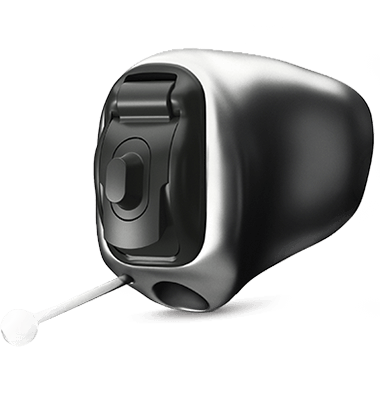Our services
Adjustments
Hearing aids have several adjustment possibilities, which allow flexible adaptation to various sounds in your environment. Using the computer, your hearing care professional can safely modify the programming of your hearing aids in order to maximize their settings according to recommended guidelines and in accordance to your individual needs.
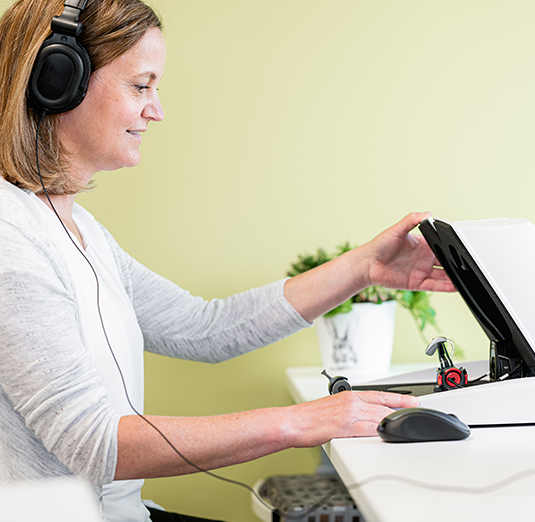

Installation of
extended-wear hearing aids
Before fitting the extended-wear hearing aid, the hearing care professional will use a light microscope to check the ear canal. If there is any debris or earwax there, he will gently remove it with a tool. Then the hearing care professional will place the hearing aid in the canal, safely and comfortably.
Hearing aid fitting
First visit
During the first visit, the hearing care professional will ask you about your main hearing difficulties and will make a complete assessment of your needs. This is in order to give you the best possible recommendation and offer you the best hearing aid solutions appropriate for your condition.
Delivery
On your second visit, we will remit your hearing aids to you and adjust them. Adjustments are made based on your hearing test, using a computer and monitoring equipment to safely ensure the correct amplification level of your hearing aids. The hearing care professional will then explain the use and maintenance of your hearing devices, as well as give you advice to facilitate your hearing adaptation.


Screening
The screening test takes place in a soundproof booth, lasts about 30 minutes, and is used to assess your hearing abilities. The hearing care professional will then review the results with you, and will be able to advise you and make the proper recommendations if necessary.
Checking
and cleaning
In addition to the daily maintenance you provide to your hearing aids, we recommend that you see your hearing care professional semi-annually or annually to ensure that your hearing aids are in good working order as well as to have them thoroughly cleaned. He will also check that they are still the right fit for your needs.

Ours products
RECHARGEABLE HEARING AIDS
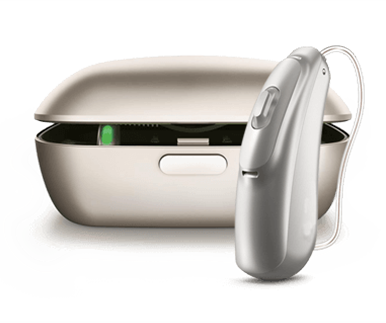
Most hearing aid manufacturers now offer a rechargeable option for their hearing aids. Some are built around a lithium battery and work with an induction charger. This is an environmentally-friendly solution.
- Up to 24 hours of operation
- Easier handling for people with reduced dexterity
- Easy to use charger
Note : An assessment by a Hearing Aid Acoustician is required in order to determine if the hearing aid is suitable for each patient’s needs
EXTENDED-WEAR HEARING AIDS

These extended-wear hearing aid can be worn during all your ongoing activities: sports, showering, talking on the phone, listening to music with headphones, sleeping, etc.
- Can be worn for 2 to 3 consecutive months 24 hours per day
- Invisible to your interlocutor
Note : An assessment by a Hearing Aid Acoustician is required in order to determine if the hearing aid is suitable for each patient’s needs
CIC CUSTOM INVISIBLE HEARING AIDS, IIC AND DEEP CIC

These IIC (Invisible-In-Canal) and CIC (Completely-In-Canal) hearing aids offer excellent performance. Thanks to their reduced size, they sit discreetly in a small space, at the bottom of the ear canal and respond to a large number of
amplification needs.
- Discreet
- Versatile
Note : An assessment by a Hearing Aid Acoustician is required in order to determine if the hearing aid is suitable for each patient’s needs
IN-THE-CANAL AND CUSTOM HALF-SHELL HEARING AIDS

These small in-the-canal and half-shell hearing aids allow a perfect adaptation to the shape of the ears as well as offering great sound quality. Like CIC hearing aids, they fit discreetly in a small space, deep in the ear canal and partly in the outer ear, and meet a variety of amplification needs.
- Discreet
- Comfortable
- High-performance
- Some models are covered by the Régie de l’assurance maladie du Québec (RAMQ) program
Note : An assessment by a Hearing Aid Acoustician is required in order to determine if the hearing aid is suitable for each patient’s needs
CUSTOM FULL-SHELL HEARING AIDS

Full-shell hearing aids are designed to fit snugly in the ear canal and the outer-ear. They are suitable for mild to severe hearing loss. Full-shell hearing aids completely fill the outer-ear and are larger in size.
- Comfortable
- High-performance
- Some models are covered by the Régie de l’assurance maladie du Québec (RAMQ) program
Note : An assessment by a Hearing Aid Acoustician is required in order to determine if the hearing aid is suitable for each patient’s needs
BEHIND-THE-EAR HEARING AIDS
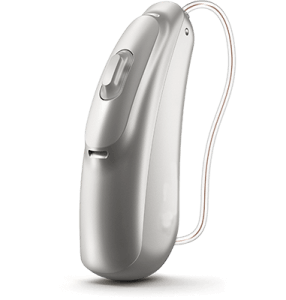
Behind-the-ear hearing aids are suitable for all degrees of hearing loss. They fit over the top of your ear and a discreet tube carries sound to the ear mould, which fits in the ear canal, through which amplified sounds are transmitted.
- Available in dozens of colours to match your hair colour or glasses
- Choice of ten different models which come in three different configurations :
- Tube with ear mould
- Slim Tube
- Receiver in-the-ear (RIC)
- Discreet
- Comfortable
- High-performance
- Some models are covered by the Régie de l’assurance maladie du Québec (RAMQ) program
Note : An assessment by a Hearing Aid Acoustician is required in order to determine if the hearing aid is suitable for each patient’s needs
ACCESSORIES

Wireless accessories connect directly to your hearing aids. They allow you to do more while wearing your hearing aids. With or without using a remote control, Bluetooth technology connects your hearing aids with other devices such as cellphones, home phones, MP3 players, televisions, audio systems and FM receivers. Remote controls also give you manual control of your hearing aids and other connected accessories.
- Reliable
- Practical and user-friendly
- Some models are covered by the Régie de l’assurance maladie du Québec (RAMQ) program.
Note : An assessment by a Hearing Aid Acoustician is required in order to determine if the hearing aid is suitable for each patient’s needs
HEARING AID CARE PRODUCTS
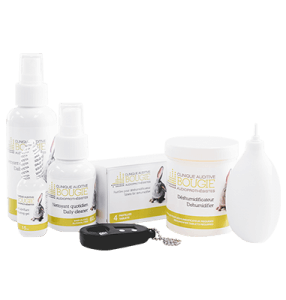
It is essential to clean and care for your hearing aids daily. There’s a wide range of products designed to make this task easier. Your Hearing Aid Acoustician will gladly help you choose the best products for your hearing aids.
Note : An assessment by a Hearing Aid Acoustician is required in order to determine if the hearing aid is suitable for each patient’s needs
ZINC-AIR BATTERIES

This battery type stores more energy than older mercury or silver ones, as well as last longer.
- Keeps full power until you remove the protective strip
- Approved by Health Canada
*We care about the environment. Please keep your used batteries and bring them for recycling to the Clinic at your next visit.
Note : An assessment by a Hearing Aid Acoustician is required in order to determine if the hearing aid is suitable for each patient’s needs
HEARING PROTECTORS (swimming, musicians, sleep and workers)
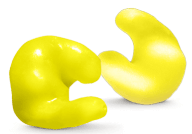
The best method in protecting your hearing is hearing protectors.
- Comfortable and durable
- Molded to your ear for optimal comfort
Note : An assessment by a Hearing Aid Acoustician is required in order to determine if the hearing aid is suitable for each patient’s needs



